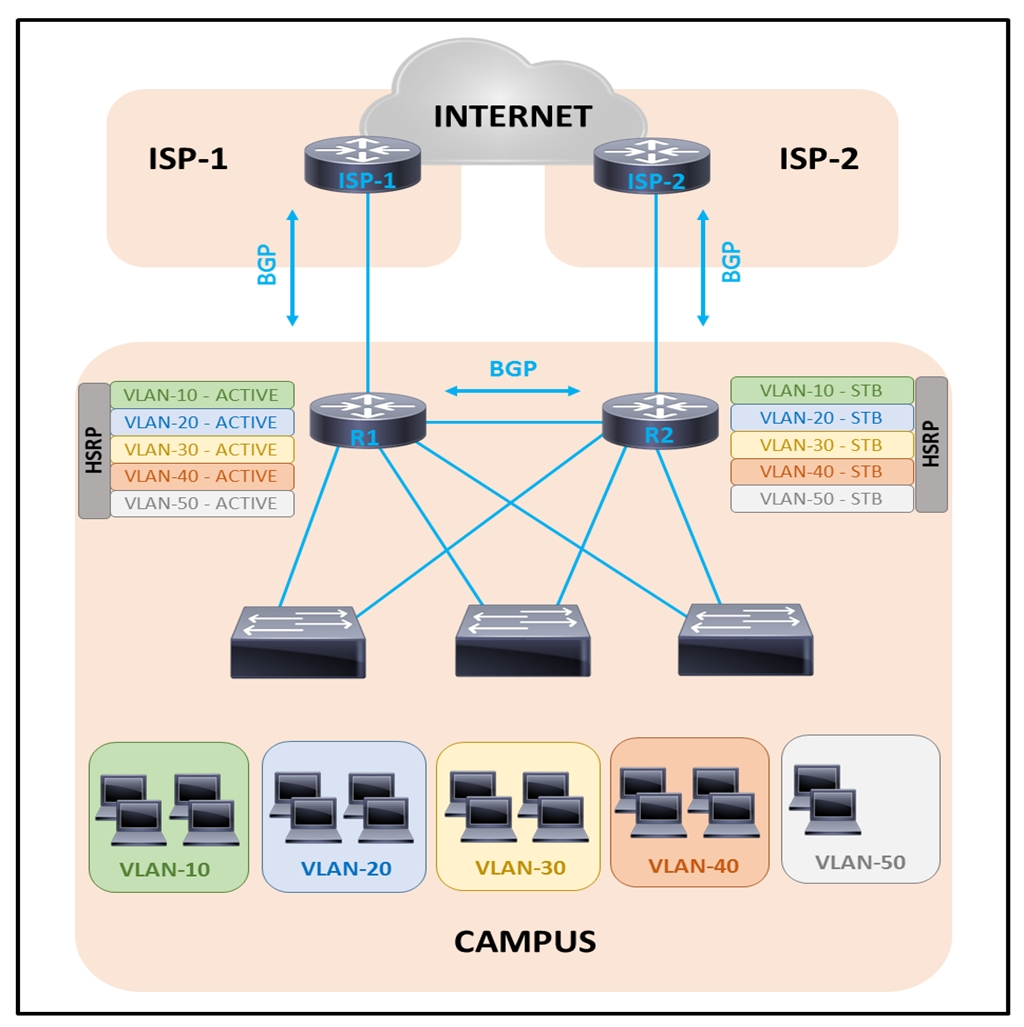Refer to the exhibit.
A customer is running HSRP on the core routers. Over time the company has grown and requires more network capacity. In the current environment, some of the downstream interfaces are almost fully utilized, but others are not. Which solution improves the situation?
A
An architect must develop a campus network solution that includes:
✑ logically segmented and isolated networks
✑ ability to communicate between network segments when required
✑ support for overlapping IP addresses
✑ widely available technologies to avoid purchasing specialized equipment
Which solution must the architect select?
D
Which feature is used to optimize WAN bandwidth of IGMP network traffic among WAN Edge routers in the same VPN?
A
Which consideration must be made when designing a Cisco SD-Access fabric underlay?
B
Which two functions does the control plane node provide in a Cisco SD-Access architecture? (Choose two.)
BD
A large chain of stores currently uses MPLS-based T1 lines to connect their stores to their data center. An architect must design a new solution to improve availability and reduce costs while keeping these considerations in mind:
✑ The company uses multicast to deliver training to the stores.
✑ The company uses dynamic routing protocols and has implemented QoS.
✑ To simplify deployments, tunnels should be created dynamically on the hub when additional stores open.
Which solution should be included in this design?
C
A network engineer must connect two sites across a public network using a secure tunneling technology that supports multicast traffic. Which technology should be selected?
D
A branch office has a primary L3VPN MPLS connection back to the main office and an IPSEC VPN tunnel that serves as backup. Which design ensures that data is sent over the backup connection only if the primary MPLS circuit is down?
C
Which solution allows overlay VNs to communicate with each other in an SD-WAN Architecture?
B
What are two benefits of designing an SD-WAN network fabric with direct Internet access implemented at every site? (Choose two.)
AE